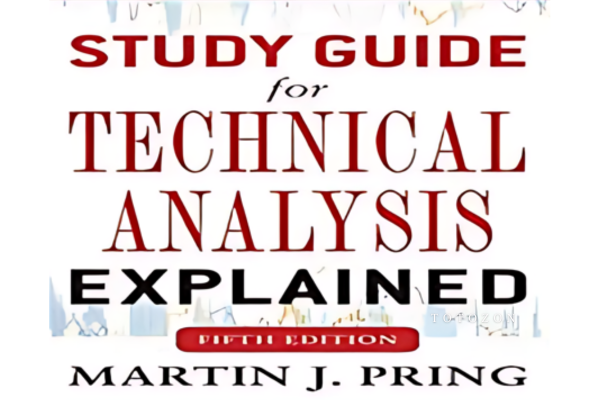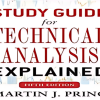Study Guide for Technical Analysis Explained (1st Edition) with Martin Pring
$6.00
File Size: Coming soon!
Delivery Time: 1–12 hours
Media Type: Online Course
Study Guide for Technical Analysis Explained (1st Edition) with Martin Pring
Introduction to Technical Analysis Explained
“Technical Analysis Explained” by Martin Pring is a cornerstone in the field of technical analysis. First published in 1980, this book has guided countless traders and investors in understanding market trends, price movements, and trading strategies. This study guide aims to break down the key concepts from the 1st edition of this seminal work, helping readers grasp its fundamental principles and apply them effectively.
Who is Martin Pring?
A Pioneer in Technical Analysis
Martin Pring is a highly respected figure in the world of finance, known for his extensive work in technical analysis. His books and teachings have educated a generation of traders on the importance of technical indicators and market cycles.
Educational Contributions
Pring has authored several influential books and conducted numerous seminars worldwide. His practical approach to teaching complex financial concepts has made him a favorite among both novice and seasoned traders.
Overview of Technical Analysis
What is Technical Analysis?
Technical analysis is the study of past market data, primarily price and volume, to forecast future price movements. Unlike fundamental analysis, which evaluates a company’s financial health, technical analysis focuses on price charts and trading patterns.
Key Concepts in Technical Analysis
- Trend Analysis: Identifying the direction of the market.
- Support and Resistance: Key levels where prices tend to reverse.
- Volume Analysis: Understanding the strength of a price move.
Chapter Breakdown
Chapter 1: Introduction to Technical Analysis
Understanding Market Psychology
Pring emphasizes the role of market psychology in price movements. Traders’ emotions and behaviors often drive market trends, making it essential to recognize these patterns.
The Dow Theory
An introduction to one of the oldest and most respected forms of technical analysis. The Dow Theory provides a foundation for understanding market trends and cycles.
Chapter 2: The Basics of Charting
Types of Charts
Pring explains the different types of charts used in technical analysis, including line charts, bar charts, and candlestick charts.
- Line Charts: Simplest form, showing only the closing prices.
- Bar Charts: Include open, high, low, and close prices.
- Candlestick Charts: Visual representation that highlights the relationship between open, high, low, and close prices.
Constructing Charts
Learn how to construct these charts and interpret their formations to identify trends and patterns.
Chapter 3: Trend Analysis
Defining Trends
Understanding how to define and recognize uptrends, downtrends, and sideways trends.
- Uptrends: Series of higher highs and higher lows.
- Downtrends: Series of lower highs and lower lows.
- Sideways Trends: Price moves within a horizontal range.
Trendlines and Channels
Drawing trendlines and channels to identify support and resistance levels within trends.
Chapter 4: Patterns and Formations
Reversal Patterns
Patterns that indicate a change in the current trend direction.
- Head and Shoulders: A reliable reversal pattern.
- Double Top and Bottom: Signals a potential trend reversal.
Continuation Patterns
Patterns that suggest the current trend will continue.
- Triangles: Symmetrical, ascending, and descending.
- Flags and Pennants: Short-term continuation patterns.
Chapter 5: Technical Indicators
Moving Averages
One of the most commonly used indicators, moving averages smooth out price data to identify the direction of the trend.
- Simple Moving Average (SMA): Calculated by averaging a set number of past prices.
- Exponential Moving Average (EMA): Gives more weight to recent prices.
Momentum Indicators
Indicators that measure the speed and change of price movements.
- Relative Strength Index (RSI): Identifies overbought and oversold conditions.
- Moving Average Convergence Divergence (MACD): Shows the relationship between two moving averages.
Chapter 6: Volume and Open Interest
Volume Analysis
Understanding how volume confirms price movements and trends.
- High Volume: Indicates strong interest and conviction.
- Low Volume: Suggests lack of interest or uncertainty.
Open Interest
Particularly relevant in futures and options markets, open interest reflects the number of outstanding contracts.
Chapter 7: Market Indicators
Sentiment Indicators
Indicators that gauge the mood of the market.
- Bullish/Bearish Sentiment: Measures the percentage of bullish versus bearish investors.
- Put/Call Ratio: Compares the number of put options to call options.
Breadth Indicators
Indicators that measure the overall strength or weakness of the market.
- Advance/Decline Line: Tracks the number of advancing versus declining stocks.
- New Highs/New Lows: Measures the number of stocks making new highs versus new lows.
Applying the Concepts
Developing a Trading Strategy
Using the concepts from “Technical Analysis Explained,” develop a robust trading strategy that includes trend analysis, chart patterns, and technical indicators.
Example Strategy
- Identify the Trend: Use trendlines and moving averages.
- Look for Patterns: Identify reversal or continuation patterns.
- Confirm with Volume: Ensure volume supports the price movement.
- Use Indicators: Apply RSI and MACD for additional confirmation.
- Set Entry and Exit Points: Define where to enter and exit trades based on analysis.
Risk Management
Implementing effective risk management techniques to protect your capital.
- Stop-Loss Orders: Set predetermined levels to exit trades and limit losses.
- Position Sizing: Determine the appropriate amount to invest in each trade.
Conclusion
Martin Pring’s “Technical Analysis Explained” provides a comprehensive guide to understanding and applying technical analysis. By mastering these concepts, traders can make more informed decisions and enhance their trading strategies. Whether you’re a beginner or an experienced trader, this study guide offers valuable insights into the world of technical analysis.

FAQs
1. What is technical analysis?
Technical analysis is the study of past market data, primarily price and volume, to forecast future price movements.
2. Who is Martin Pring?
Martin Pring is a renowned expert in technical analysis, known for his extensive work and educational contributions in the field.
3. What are the key concepts in technical analysis?
Key concepts include trend analysis, support and resistance, volume analysis, and technical indicators like moving averages and RSI.
4. How can I apply technical analysis in trading?
Develop a trading strategy that includes identifying trends, recognizing patterns, confirming with volume, and using technical indicators to set entry and exit points.
5. Why is risk management important in trading?
Risk management protects your capital and ensures that potential losses are minimized, allowing for sustained long-term growth.
Be the first to review “Study Guide for Technical Analysis Explained (1st Edition) with Martin Pring” Cancel reply
You must be logged in to post a review.
Related products
Forex Trading
Forex Trading
Forex Trading
Forex Trading
Forex Trading
Forex Trading
Forex Trading
Forex Trading
Quantamentals – The Next Great Forefront Of Trading and Investing with Trading Markets





















Reviews
There are no reviews yet.